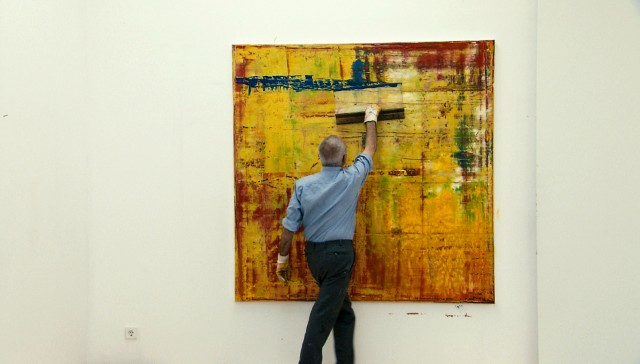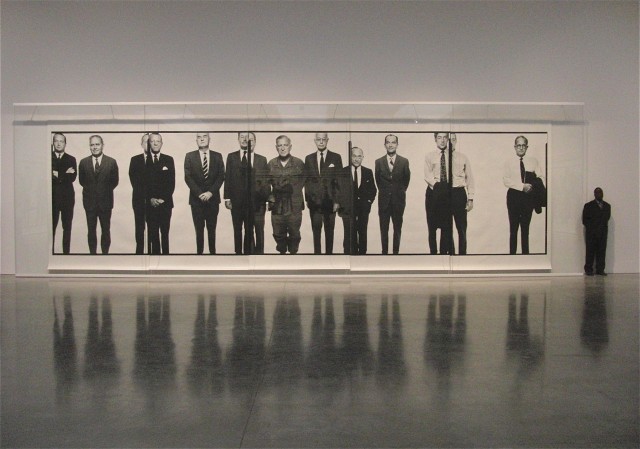
Richard Avedon, “The Mission Council,” silver gelatin prints, five panels mounted on linen, printed 1975, © The Richard Avedon Foundation (photo by twi-ny/mdr)
Gagosian Gallery
522 West 21st St. between Tenth & Eleventh Aves.
Monday – Friday through July 27, free, 10:00 am – 6:00 pm
212-741-1717
www.gagosian.com
www.richardavedon.com
Born and raised in New York City, photographer Richard Avedon began taking pictures at the YMHA when he was twelve, eventually honing his craft while serving in the Merchant Marine during WWII and studying at the New School. Renowned for his fashion photography, Avedon, who died in 2004 at the age of eighty-one, also specialized in silver gelatin portraits that explored the sociopolitical climate of America, particularly between 1969 and 1971. “My photographs don’t go below the surface,” he once said. “I have great faith in surfaces. A good one is full of clues.” Extended through July 27 at Gagosian’s Twenty-first St. gallery, “Richard Avedon: Murals & Portraits” features spectacular murals and intimate portraits that have beautiful surfaces indeed while providing plenty of clues about the state of the nation. Spread out in an awe-inspiring space designed by David Adjaye that holds surprises around every corner, the smaller portraits and massive murals — which run as high as ten feet and as long as thirty-five — feature such seminal counterculture figures as the Chicago Seven, Allen Ginsberg and his family, and Andy Warhol and such Factory denizens as Paul Morrissey, Candy Darling, Joe Dallesandro, Viva, Taylor Mead, and Gerard Malanga in addition to members of the Mission Council, a group of war administrators who influenced U.S. involvement in Vietnam. There are also smaller portraits of writers Brendan Behan, Julius Lester, and Jean Genet, activist Julian Bond, the sons of Julius and Ethel Rosenberg, Ginsberg and Peter Orlovsky naked, civil rights lawyers Leonard Weinglass, William Kunstler, and Florynce Kennedy, Nixon secretary Rose Mary Woods, and Vietnamese survivors of napalm attacks that put the pro- and antiwar movements and the sexual revolution in perspective, supplemented by vitrines containing paraphernalia relating to the nearby photographs and specific subject matter. Made before the era of digital manipulation and Photoshop, the large-scale murals, which include some subjects twice in the same series of panels, hang loosely behind sheets of plexiglass in an almost nonchalant way that adds to their mystique. The lighting also affects the murals, casting shadows of the men and women across the floor and even reflecting the mural opposite; although it was most likely accidental, it is quite intriguing to look at the eleven men of the Mission Council with a small, subtle reflection of nude factory members ghosted over them.
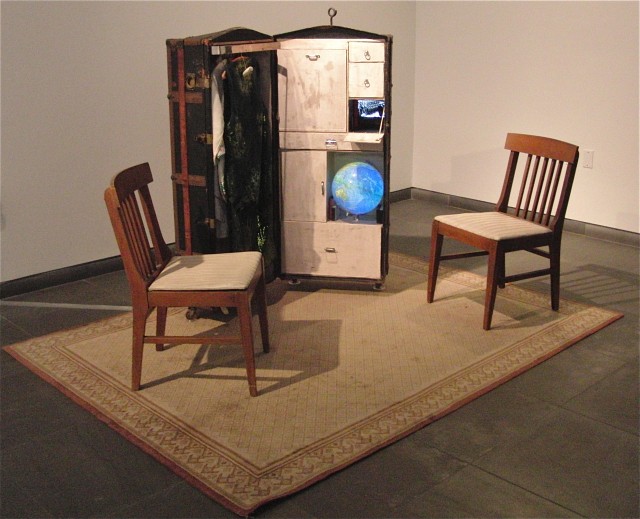
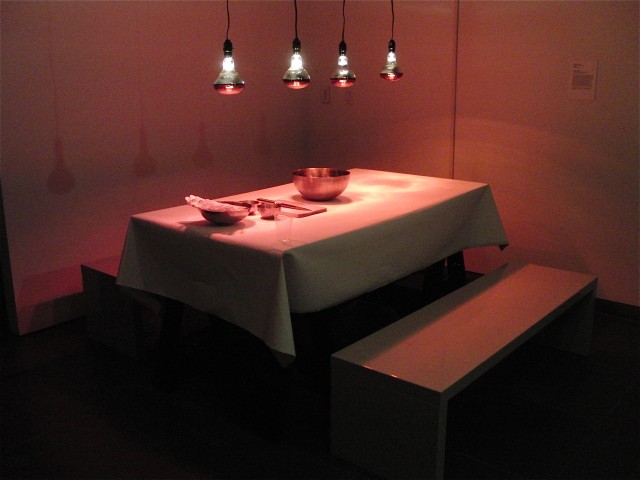
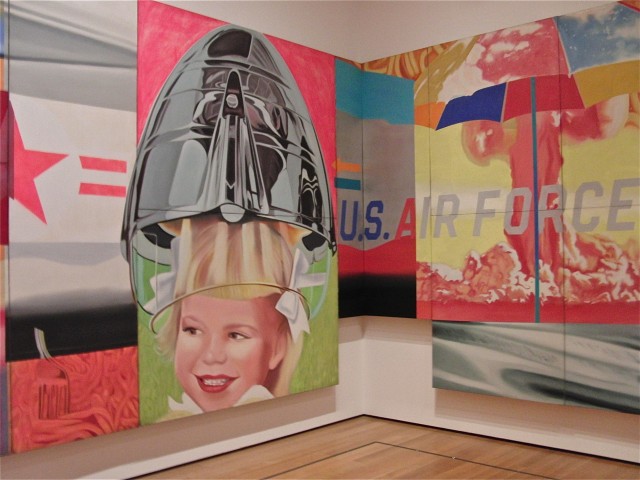
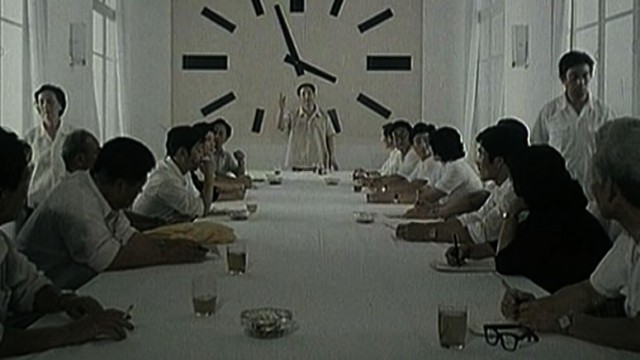
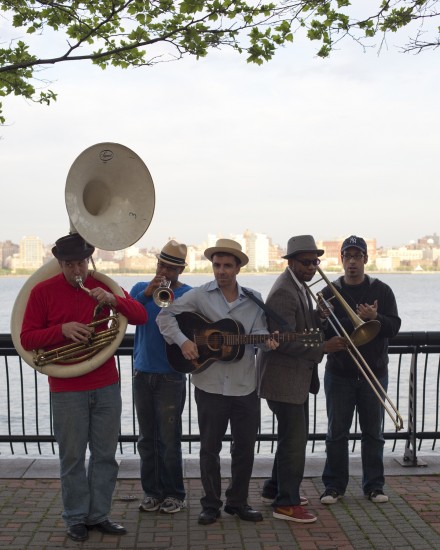

 Born in 1945 in rural Georgia to a mother who abandoned him when he was three months old, Winfred Rembert grew up picking cotton, dropped out of high school, spent time in jail and on a chain gang, and lost nearly all his teeth. But it was his years behind bars that turned him into a new man, as he learned to read and write and developed a unique art style that soon had him carving out the tales of his life on leather. Longtime journalist, producer, and writer Vivian Ducat tells Rembert’s amazing story in her engaging feature-length debut, All Me: The Life and Times of Winfred Rembert. Ducat follows the oversized Rembert, who regularly bubbles over with joy, as he returns for a show in Cuthbert, Georgia, and prepares for a big opening in New York City. “I know he’s here for a reason,” his sister Lorraine says in the film. “To help people and to be a witness through his art.” Throughout All Me, Rembert discusses many of his works, in which he uses indelible dyes on carved leather, in great detail, each one representing a part of his life, focusing on being a poor black man in a white-dominated society. It is quite poignant late in the film when he points out that his art seems to be most appreciated by whites even though it is meant as a visual history for blacks. But what really makes the documentary work is not just that Rembert is such an enigmatic, larger-than-life figure but that his art is exceptional, his self-taught, folksy style reminiscent of such forebears as Romare Bearden and Jacob Lawrence, capturing a deeply personal, intensely intimate part of the black experience in twentieth-century America. The film was previously shown at the Maysles Institute this past January, but it’s now back for a return engagement July 11, with Rembert and Ducat participating in a Q&A following the screening of this extraordinary story.
Born in 1945 in rural Georgia to a mother who abandoned him when he was three months old, Winfred Rembert grew up picking cotton, dropped out of high school, spent time in jail and on a chain gang, and lost nearly all his teeth. But it was his years behind bars that turned him into a new man, as he learned to read and write and developed a unique art style that soon had him carving out the tales of his life on leather. Longtime journalist, producer, and writer Vivian Ducat tells Rembert’s amazing story in her engaging feature-length debut, All Me: The Life and Times of Winfred Rembert. Ducat follows the oversized Rembert, who regularly bubbles over with joy, as he returns for a show in Cuthbert, Georgia, and prepares for a big opening in New York City. “I know he’s here for a reason,” his sister Lorraine says in the film. “To help people and to be a witness through his art.” Throughout All Me, Rembert discusses many of his works, in which he uses indelible dyes on carved leather, in great detail, each one representing a part of his life, focusing on being a poor black man in a white-dominated society. It is quite poignant late in the film when he points out that his art seems to be most appreciated by whites even though it is meant as a visual history for blacks. But what really makes the documentary work is not just that Rembert is such an enigmatic, larger-than-life figure but that his art is exceptional, his self-taught, folksy style reminiscent of such forebears as Romare Bearden and Jacob Lawrence, capturing a deeply personal, intensely intimate part of the black experience in twentieth-century America. The film was previously shown at the Maysles Institute this past January, but it’s now back for a return engagement July 11, with Rembert and Ducat participating in a Q&A following the screening of this extraordinary story.